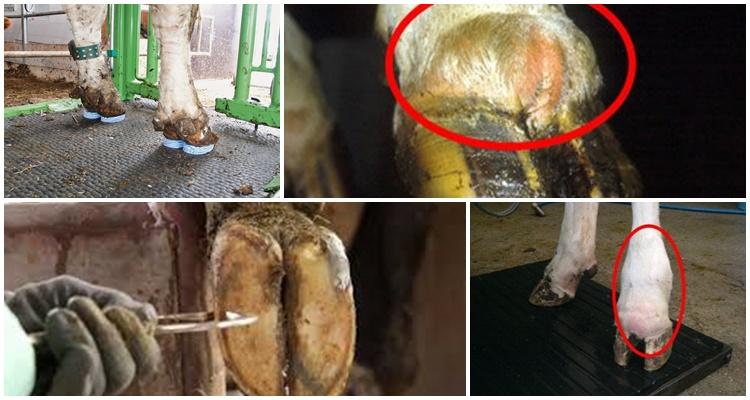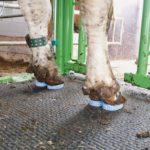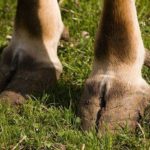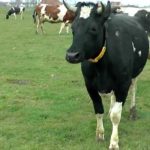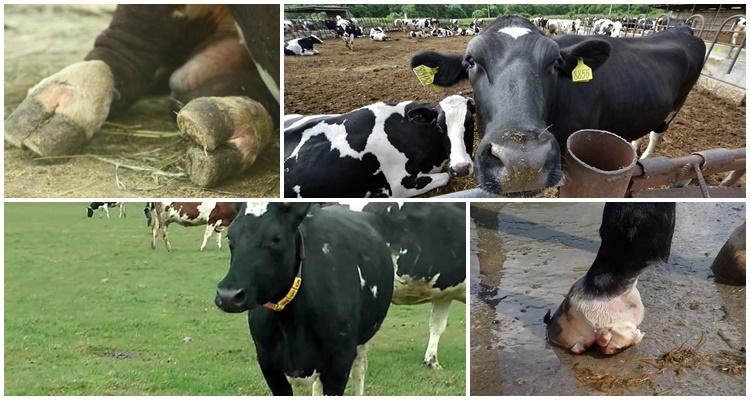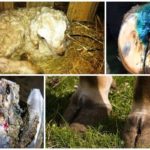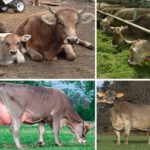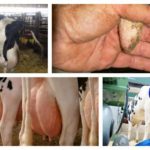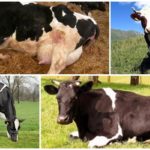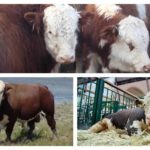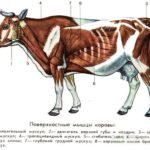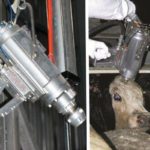The incidence of foot rot (necrobacteriosis) is widespread on farms everywhere. The consequence is a decrease in productivity and, accordingly, profit from the sale of milk and meat. Let's look at what causes the disease, what its symptoms are, how to diagnose and treat it, and ways to prevent the disease from occurring and spreading on farms.
How does infection occur?
Hoof rot is an inflammation of the tissues in the interhoof space, turning into necrosis, as well as putrefactive processes in the hoof horn. The causative agents of this disease in cattle are the bacteria Fusobacerium nekrophorum and, less commonly, Dichelobacter nodosus, which are joined by purulent-necrotic microflora that penetrates damaged hooves. Pathogens of hoof rot and secondary infection enhance the combined effect.
Foot rot, or midge, is easily transmitted from a sick cow to a healthy one. The main routes of transmission of infection: contact of a sick individual with a healthy one, through dirty litter; bacteria can be found on the tires of vehicles arriving at the farm.
The spread of the disease is facilitated by violations in the rules of keeping cows: exceeding the norm of animal density, rare replacement of bedding, irregular trimming and treatment of hooves or its absence, lack of physical activity, unbalanced nutrition in vitamins and minerals.
Foot rot is considered a seasonal disease, often manifesting itself during cold periods, with high humidity, when animals spend a lot of time in stalls on damp bedding. The infection enters the hoof through microdamages. These can be wounds and cuts left by sharp stones, glass, nails, wire, which can be in the pasture, watering hole and even in the stall. The gates for infection can be bruises, calluses, microcracks of bones. Dirt and uncollected manure contribute to infection.
In addition to poor living conditions, the hereditary predisposition of cows to foot rot also plays a role; this disease is more common in highly productive individuals. Others may be associated with this disease cow diseases: inflammation of the genital organs, acidosis, mastitis.
Signs and symptoms of foot rot
Visual symptoms at the initial stage of the disease may not be noticeable. As the pathology progresses, inflammation and destruction of the hoof horn become noticeable, hair falls out around the hooves, the skin turns red, an unpleasant odor appears, and the temperature rises. Sometimes the inflammation can go up, and ligaments, tendons, nearby tissues and even internal organs, such as the udder, are affected.
You can tell that a cow has foot rot by the fact that she often tucks her leg and licks her hoof. At the next stage, you can notice purulent discharge from the hooves, whitish in color, with an unpleasant odor. The cow begins to limp, walks with difficulty, and loses weight. The hoof horn dies and gradually flakes off. If timely treatment is not carried out, the consequence of the disease will be chronic arthritis, and in acute cases necrobacteriosis animal may die.
Diagnostic measures
The diagnosis is made based on clinical signs and bacteriological analysis. They take him to the laboratory. When examining a diseased hoof, signs of inflammation, swelling of the hoof, redness and necrotic changes in the tissues in the interhoof area are detected.
Methods for treating foot rot in cows
When treating sick animals at home, they must be isolated from all others. First, the hoof is cleaned and treated with antiseptic solutions. If necessary, remove the affected tissue and apply a bandage.Hoof rot is treated by administering penicillin and tetracycline antibiotics. If therapy is timely, recovery can occur within 3-4 days; with an advanced form of the disease, treatment will take much longer.
If many cows are sick at the same time, antibiotics are given with feed and water. They use drugs such as Aureomycin and Tetracycline. The first medicine is given at the rate of 100 mg per 1 individual per day, the minimum dosage is 4 mg per 1 kg of live weight per day.
For the entire period of treatment, the sick animal must stand separately from other animals in the herd so as not to spread the infection.
In addition to antibiotics, cows are given anti-inflammatory drugs, antipyretics and painkillers, which improve the condition of the animals and promote a speedy recovery.
Possible consequences
In terms of the damage that foot rot causes to livestock, this disease is second only to diseases of the genital organs and mastitis. Losses are determined by a decrease in milk yield and weight of cows, the cost of treating hooves and other organs, and the culling of seriously ill individuals.
Prevention of foot rot in livestock
This is a regular inspection and cleaning of the hooves, removal of overgrown horns, which must be carried out at least 2 times a year. It is important that cows have the opportunity to walk and graze in the fresh air and move a lot. This is necessary for the natural erasure of the hoof horn and the regrowth of healthy tissue.
It is especially important that the humidity in the room is regulated. High humidity is one of the main reasons that lead to the disease.Under the influence of constant humidity, the hoof horn softens excessively, becomes unstable to mechanical stress, becomes brittle, and begins to crack. Regular ventilation and manure removal should help solve the problem. However, too dry air in the barn will also not benefit the animals.
Cleanliness of pens and stalls is of great importance in the prevention of foot rot. The causative agents of the disease can survive in the ground and bedding for up to 10 months, so you should remove the bedding as often as possible and replace it with new one, clear the paddock of dirty straw, branches, stones and anything that could injure animals.
Disinfection of premises with lime and copper sulfate or formaldehyde solution should also be mandatory, which should be carried out 2 times a year. You also need to clean and treat drinking bowls, feeders and equipment with antiseptics. For prevention, boxes filled with dry lime with zinc and copper sulfate can be installed in the barn aisle at floor level. Hooves will be disinfected as animals walk over this material. After some time, the mixture in the boxes needs to be changed.
To prevent necrobacteriosis, cows should receive feed products containing the required amount of phosphorus, calcium, retinol and calciferol. These substances and mineral elements are necessary for the normal formation of bone and muscle tissue.
A noticeable reduction in cases of foot rot occurs after vaccination, reaching insignificant percentages. In addition, vaccination is more cost-effective than treatment.
Is it possible to drink milk from a sick cow?
Milk from such cows can be consumed only some time after the end of therapy, because it may also contain antibiotics. This period will be different for each drug; you can find out from the instructions for use. A certain period after treatment must be maintained before slaughtering the cow for meat. If this cannot be done, then the meat can only be used for animal feed.
Necrobacteriosis, or hoof rot as it is called, is a common pathology on farms located in countries with a humid and cool climate. Due to a decrease in cow productivity, the disease causes significant economic damage to farms. The occurrence of pathology in cows can be prevented by following the rules of care: keeping them clean, providing regular walks and good quality feed. Treatment must be mandatory, comprehensive and carried out immediately after the disease is identified. Therapy and prevention help keep herd productivity and production costs at the proper level.

